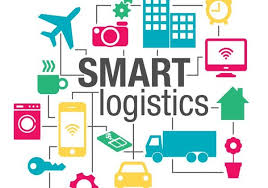
In an era when working remotely has become the new normal, digitization of core supply chain functions has become necessary for the survival of an organization. From a perspective of ‘putting more people to manage and firefight’ that is prevalent in the industry, the focus is moving towards automation and digitization.
Logistics is the most important business function of an organization as it converts factory output to cash. The criticality of logistics is also because this process is closest to the consumption point and any disruption will directly hit the fill rates and thereby the realized revenue.
Many companies spend huge amount of effort in-terms of manpower and time to enable, manage and monitor the various logistics processes that are associated with inbound Raw material movement, movement between plants and sub-contractors and outbound logistics.
Lot of time and energy are also spent to ensure that the vehicles deliver goods on time, ePoDs are captured, invoices are generated properly and reconciled.
One of the largest and oldest companies in the Home Fragrance and Incense Sticks business underwent a complete transformation and digitization of their logistics processes. Their logistics network comprised of 400 Vendors, 30 Manufacturing Plants, 25 Packaging Plants, 200 Sub-Contractors, 5 Mother Depots, 35 Depots and 6000 Customers. The logistics operations for supply chain functions like purchasing, sub-contracting and distribution were brought into one common system, automated and digitized.
Sub processes like cartage, merging of trips, multi drop/multi pick shipments, handling multi modal transport like a combination of road and rail were also handled.
Because of such a complex network, the organization used to spend considerable amount of time and effort to manually enable, monitor and reconcile each goods movement. Moreover, when it came to transporter payments, the logistics team used to spend lot of time in validating each invoice. The accounting team also had to spend considerable time and effort to roll up the expenses to the right cost center to create visibility of the logistics expenses under the right subsidiary.
This extensive automation effort also required real-time integration with the SAP ERP backbone.
A quick project implementation helped the organization cut down its manual processes drastically and reduced all invoicing related errors.
There was also a reduction in logistics costs as truck utilization improved with options of merging trips and reverse haul possibilities opening up because of better ETA visibility to the planners.
Logistics planners now have faster and accurate information on Logistics cost based on products, locations, distribution type, process type, subsidiary etc. They also have better control over main KPIs like TAT, On Time Delivery and Supplier Ratings
